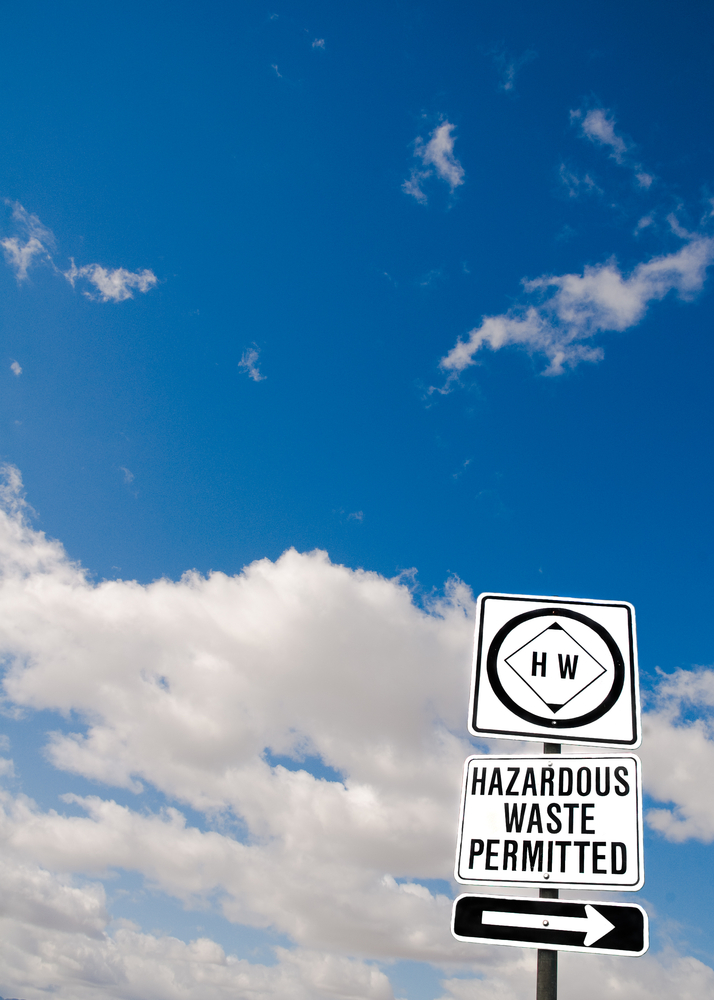 |
Definition and Signature
Question: A generator contracts with a hazardous waste transport company to haul hazardous waste from the generator to a TSDF. While in transit, the driver of the truck brings the hazardous waste to a transfer facility. A second driver, from the same transport company, hauls the waste from the transfer facility to the TSDF. Must the generator identify the second driver on the manifest as a second transporter? Must the second driver sign the manifest since he is a new individual taking possession of the waste?
Answer: The generator does not need to identify the second driver on the manifest, nor would the second driver need to sign the manifest when he takes possession of the waste. When the same transport company conducts all transportation activities, and there is no interruption in that company’s custody and control, it is unnecessary for generators to identify individual drivers of a transport company on the manifest. The term “transporter” and a transporter’s EPA ID number refer to the entire company involved in the transport of hazardous waste, not individuals within the company. Custody of a given shipment of hazardous waste lies with the entity that is associated with the EPA ID number listed on the manifest, not with the individual operating the transport vehicle. Therefore, when waste shipments are exchanged among individuals within the same transport company, a generator is not required to identify those individuals as multiple transporters on the manifest, and no signature is required of those drivers. The signature and EPA ID number of a second transporter are required on the manifest only when a second transport company, with its own EPA ID number, takes possession of the waste.
What records must be kept on hand and for how long? Find out now with our Free Special Report, Recordkeeping for EHS Managers. Also receive 2 trial issues of BLR’s Environmental Manager’s Compliance Advisor! Download Your Free Report
Transport Between Contiguous Properties
Question: A company owns three contiguous properties along a public right-of-way. The company operates an LQG on one of the properties and a permitted TSDF on another property. An industrial park, owned by the same company, is situated between the LQG and TSDF. Is a manifest required if the LQG chooses to send hazardous waste to the TSDF?
Answer: The LQG would not have to manifest the shipment of hazardous waste destined for the TSDF. The manifesting requirements in 40 CFR Part 262 Subpart B and the pre-transport marking requirements in Section 262.32(b) do not apply to the transport of hazardous waste along the border of contiguous property, under the control of the same person, even if such contiguous property is divided by a public or private right-of-way (Section 262.20(f)). (The requirements for hazardous waste discharges, located in Part 263 Subpart C, continue to apply to this situation.) In this scenario, assuming that all three properties are under the control of the same person and are contiguous, a manifest need not accompany the waste being shipped from the LQG to the TSDF.
Comply with OSHA and EPA recordkeeping requirements with our free report: Recordkeeping for EHS Managers. Also receive 2 free trial issues of BLR’s Environmental Manager’s Compliance Advisor! Download Your Free Report
Tracking Requirements for Used Oil
Question: The used oil regulations require marketers and processors/re-refiners to keep records of all used oil shipped off-site (40 CFR 279.56(b) and 279.74). In addition, used oil processors/re-refiners and burners must maintain records of all used oil received from off-site (40 CFR 279.56(a) and 279.65(a)). Used oil transporters must also track used oil accepted for shipment as well as used oil deliveries (40 CFR 279.46). Must a hazardous waste manifest accompany each used oil shipment in order to satisfy these tracking requirements?
Answer: A hazardous waste manifest does not need to accompany each shipment of used oil. Used oil transporters, burners, processors/re-refiners, and marketers must maintain records documenting the acceptance and delivery of each used oil shipment. Records for each shipment include information such as the name, address, and EPA ID number of the transporter and the facility that provided the used oil for transport; the quantity and date of shipment; and the EPA ID number of the receiving facility (40 CFR 279.46, 279.56, 279.65, and 279.74). These records may take the form of a log, invoice, manifest, bill of lading, or other shipping document. The tracking record, however, does not need to physically accompany each used oil shipment (57 FR 41592 (9/10/92)).
For example, a used oil marketer may send an invoice incorporating all necessary information to the used oil recipient ahead of the used oil shipment instead of including the invoice with the used oil shipment. Used oil transporters, processors/rerefiners, burners, and marketers must maintain copies of these invoices or other shipping papers at their facility for at least 3 years (40 CFR 279.46(d), 279.56(c), 279.65(b), and 279.74(c)). Note, however, that used oil that meets the definition of a hazardous material under the Department of Transportation hazardous materials regulations (49 CFR 100 to 185) may be subject to additional tracking requirements.
See tomorrow’s Advisor for more Q&As on training for signing the manifest.

You need to be entirely accurate in your statements. For example, Re: “Tracking Requirements for Used Oil”, you need to stipulate that your comments do NOT include more-stringent state-specific requirements such as those of Michigan which requires that any liquid industrial waste (“LIW”) like Used Oil must be recorded and tracked on a hazardous waste manifest.